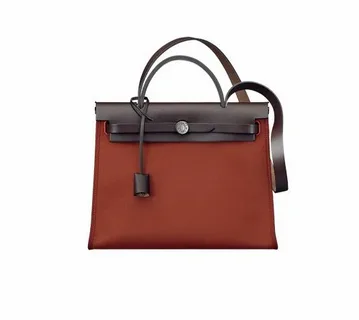When it comes to iconic handbags, few have achieved the legendary status that the herbag holds. This unique accessory has carved a niche for itself, blending timeless style with innovative design. In this article, we dive deep into Herbag History: The Evolution of a Cult Classic, exploring how this handbag went from a niche product to a beloved staple in fashion wardrobes worldwide.
The Origins of the Herbag
The story of the Herbag begins in the 1970s, a time when luxury fashion was undergoing a shift towards practicality and modern aesthetics. Introduced by Hermès, the Herbag was designed to offer the elegance of the brand’s signature craftsmanship while incorporating versatility. Unlike traditional leather bags, the Herbag featured a detachable canvas body paired with leather flaps, allowing for easy cleaning and customization.
This innovative design was a game-changer, as it combined style with functionality in a way few handbags had before. Its modular nature appealed to a broad audience, from fashion enthusiasts to those seeking a durable everyday bag.
Key Features That Set the Herbag Apart
Understanding the Herbag History: The Evolution of a Cult Classic means recognizing the features that made it stand out:
- Modular Design: The canvas body could be swapped out or cleaned separately from the leather flap.
- Timeless Aesthetic: Minimalist yet elegant, fitting a variety of styles and occasions.
- Durability: Crafted with high-quality materials typical of Hermès, ensuring long-lasting use.
These elements not only made the Herbag functional but also a collectible item for fashion connoisseurs.
How the Herbag Became a Cult Classic
Over the decades, the Herbag has maintained a steady following, becoming more than just a handbag — it’s a symbol of understated luxury and clever design. Its reputation as a cult classic is built on its:
- Heritage: Rooted in Hermès’ tradition of quality and exclusivity.
- Adaptability: The bag’s design has been appreciated across generations.
- Rarity: Though not as widely produced as other models, its scarcity has driven up desirability.
Fashion influencers and collectors have often praised the Herbag for its unique place in handbag history, cementing its legacy.
The Modern Relevance of the Herbag
In today’s fashion landscape, sustainability and versatility are key trends, and the Herbag fits perfectly within these ideals. The ability to replace parts rather than the entire bag aligns with eco-conscious consumer values, keeping the Herbag History: The Evolution of a Cult Classic relevant in modern times.
Hermès has occasionally revisited the Herbag, reintroducing it with subtle updates that honor its original design while appealing to contemporary tastes. This ongoing evolution showcases the enduring appeal of this cult classic.
The Herbag’s journey from a practical handbag concept to a fashion icon is a testament to innovative design and timeless elegance. By understanding the Herbag History: The Evolution of a Cult Classic, we appreciate how a simple idea can transform into a lasting symbol of style.


